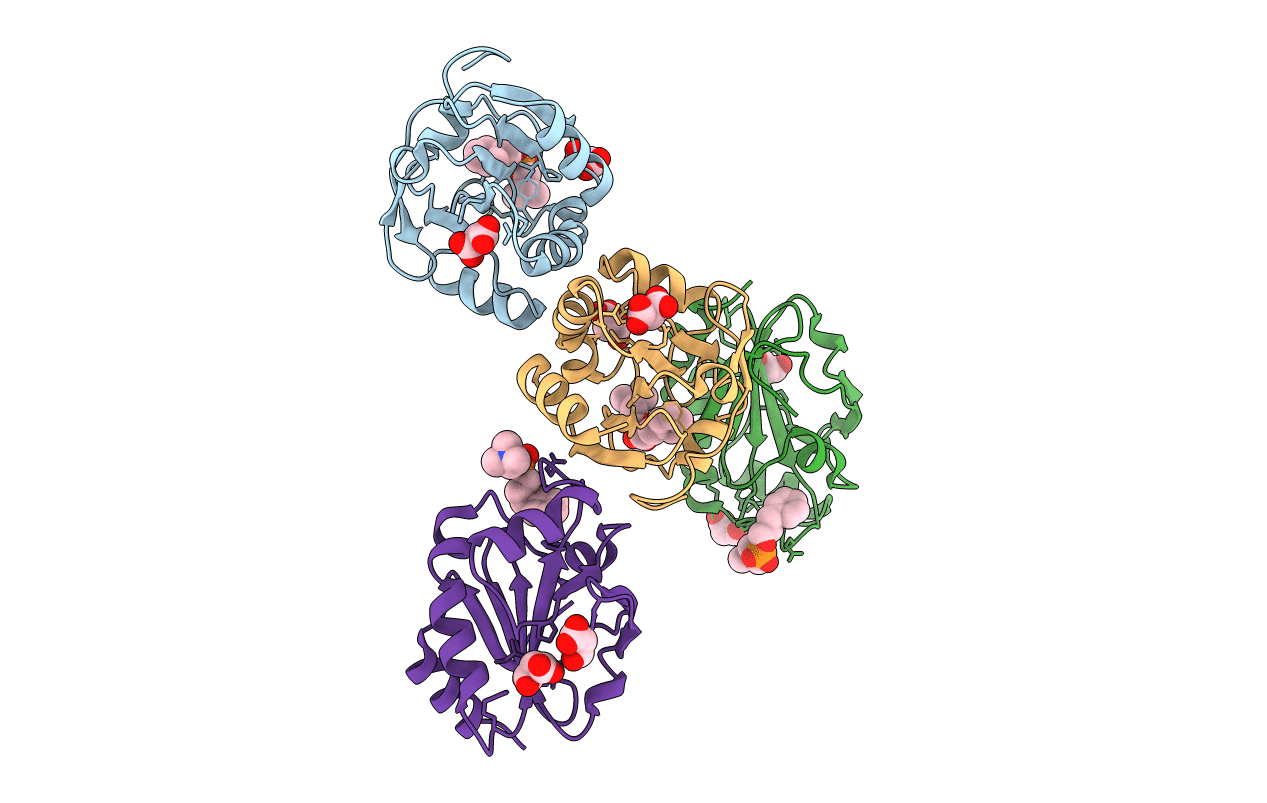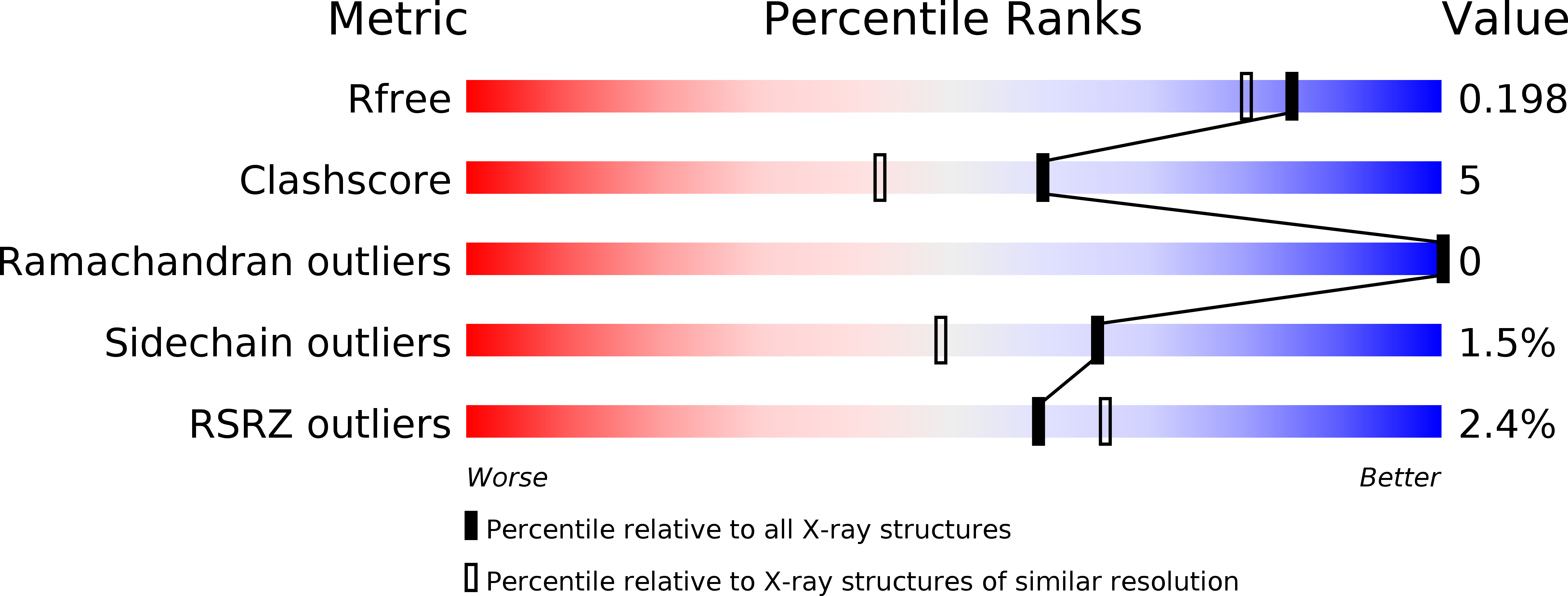
Deposition Date
2012-10-29
Release Date
2013-10-30
Last Version Date
2024-11-06
Entry Detail
PDB ID:
2YP6
Keywords:
Title:
Crystal structure of the pneumoccocal exposed lipoprotein thioredoxin sp_1000 (Etrx2) from Streptococcus pneumoniae strain TIGR4 in complex with Cyclofos 3 TM
Biological Source:
Source Organism:
STREPTOCOCCUS PNEUMONIAE TIGR4 (Taxon ID: 170187)
Host Organism:
Method Details:
Experimental Method:
Resolution:
1.77 Å
R-Value Free:
0.18
R-Value Work:
0.16
R-Value Observed:
0.16
Space Group:
P 21 21 21


